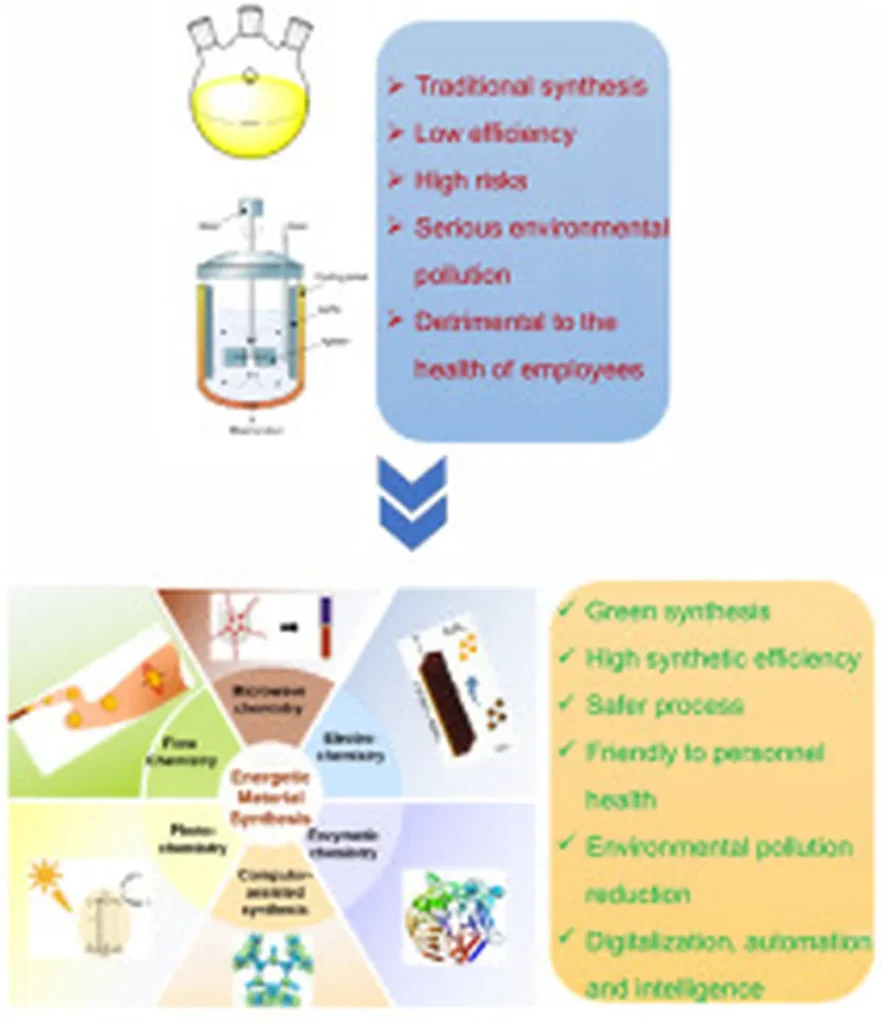In a groundbreaking study, researchers have unveiled the intricate chemical mechanisms behind the explosion of nanoscale carbon materials, specifically nitro-fullerenes. This research, conducted by Vitaly V. Chaban, Eudes Eterno Fileti, and Oleg V. Prezhdo, employs reactive molecular dynamics simulations to dissect the decomposition process of nitro-fullerene, offering unprecedented insights into the nanoscale detonation phenomena.
Nitro-fullerenes, a class of energetic materials, are distinguished by their high density of energetic covalent bonds, making them particularly potent in both civilian and military applications. The study focuses on C60(NO2)12, a nitro-fullerene compound, to explore the fundamental processes that trigger its explosive behavior. Upon initial heating, this compound undergoes rapid disintegration, resulting in a dramatic increase in temperature and pressure—reaching thousands of Kelvins and bars within mere tens of picoseconds.
The explosion mechanism begins with the isomerization of the NO2 groups into a C-O-N-O configuration. This isomerization is followed by the emission of NO molecules and the formation of CO groups on the surface of the buckyball. As the process unfolds, the NO molecules oxidize into NO2, and the C60 structure disintegrates, releasing CO2. At the peak temperatures observed during the simulation, CO2 further decomposes into diatomic carbon.
One of the most significant findings of this research is the strong dependence of the initiation temperature and released energy on the chemical composition and density of the material. This discovery provides critical guidelines for controlling combustion and detonation at the nanoscale, potentially revolutionizing the design and application of nanoscale explosives.
The implications of this study extend beyond theoretical insights. By understanding the precise chemical pathways involved in the explosion of nitro-fullerenes, researchers can develop more effective and safer energetic materials. This knowledge is particularly valuable for the defence and security sectors, where the precise control of explosive properties is paramount.
Furthermore, the study highlights the potential for tailoring the properties of nitro-fullerenes by adjusting their chemical composition and density. This could lead to the development of new materials with enhanced performance characteristics, such as higher energy output and more controlled detonation processes.
In conclusion, the reactive molecular dynamics simulation of nitro-fullerene decomposition offers a detailed chemical mechanism of nanoscale explosions. The findings provide a foundation for advancing the field of energetic materials, with significant implications for both military and civilian applications. As research continues to unravel the complexities of nanoscale explosions, the potential for innovation in defence technology and beyond becomes increasingly promising. Read the original research paper here.

